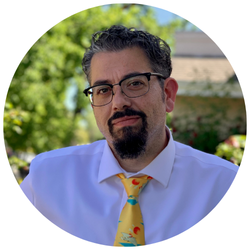Imagine a place where time slows down, where the clamor of everyday life fades into the background, and all you can hear is the rhythmic tap of your keyboard. Here, your mind has the freedom to explore the depths of creativity that often lie dormant in the hustle and bustle of routine life.
Pack your Freewrite and an open mind — inspiration awaits at writing workshops and retreats.
If you’ve spent time in a writing community or around writers, you’ll have heard of (and maybe even attended) writers retreats and workshops.
In a profession that's often solo, community events like these are a central part of any writer’s education and inspiration. I would recommend going to them as often as possible.

Writing Workshops
While writing workshops are all unique, the main purpose of a workshop is instructional, and it usually focuses on a specific aspect of writing. It can be anything from building better characters to outlining your novel or critiquing your screenplay.
Workshops usually last anywhere from a couple of hours to a couple of days, and can be free or charge a price, often depending on the experience of the instructor.
In a workshop, you’ll generally get to spend dedicated time working on your project, whether it’s new or old, and find yourself in a structured learning environment.
One of my favorite workshops to teach is one in which I guide writers through building a tool kit for writing their upcoming novel. Writers arrive with an idea, and I walk them through building a journal to house that idea and feed off their inspirations for it.
Participants leave with a tool kit of bespoke resources, an outline, a synopsis, and more.
You can find workshops on just about any topic, but they are always hands-on in a very structured way.

Writing Retreats
Writing retreats can, and often do, include workshops, but it’s not necessary at every retreat. Writing retreats are generally designed as an oasis where you can get away from the rigors and distractions of your real life in order to focus on your writing and your craft.
Some writing retreats can be solo affairs, while others are organized with a group of writers. In larger groups, there are often workshops or classes scheduled throughout the retreat period, but at its core, a writing retreat is a place where you’re working on your own writing.
At group retreats, there is often also scheduled time dedicated to talking about writing craft, exchanging ideas, and drawing inspiration from a group of like-minded individuals.
Retreats are often a day to a few days long — sometimes longer! — and tend to cost more than simple workshops, especially if a full schedule of workshops and educated instructors are involved. Retreats are also often hosted in inspiring locations, though the location will affect the price.

Find Writing Workshops & Retreats
So how do you find workshops and retreats to attend?
The first thing to do is take into account your budget and time allowance. Events near you will be cheaper to get to than a fanciful destination, so we suggest starting with your local writing groups.
In most geographic regions, there are organized groups for writers. For example, I’m part of the League of Utah Writers(since I live in Utah) and my local chapter is constantly letting me know about opportunities for workshops.
Your local library and nearby university English departments are also great resources for finding writing workshops.
National organizations, which are usually arranged by genre, often host workshops and conferences, as well. The Horror Writers Association, Science Fiction and Fantasy Writers Association, Mystery Writers, and many others will have resources to help you find events relevant to your chosen genre.
Host Your Own Retreat
You can also arrange your own retreat! I’ve occasionally spent weekends in a hotel room by myself trying to find my own oasis away from life while under the pressure of a deadline.
I’ve also booked cabins that can accommodate thirty people to spend a weekend with writing friends, just writing and talking craft. Yeah, it can be a pain to arrange a deposit and all the food for a crowd that big, but many hands make light work.
And I alwaysleave more creatively invigorated and with more work done than when I started.
Can't get away right now? Block out a day on your calendar to lock yourself in a room at home and write. Let your friends and family know that you won't be available, and give the whole day over to writing.
At the end of the day, that's what we're all working toward: more words on the page.




























